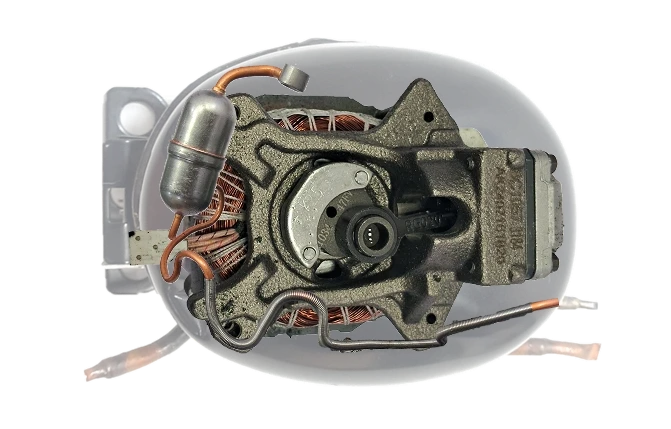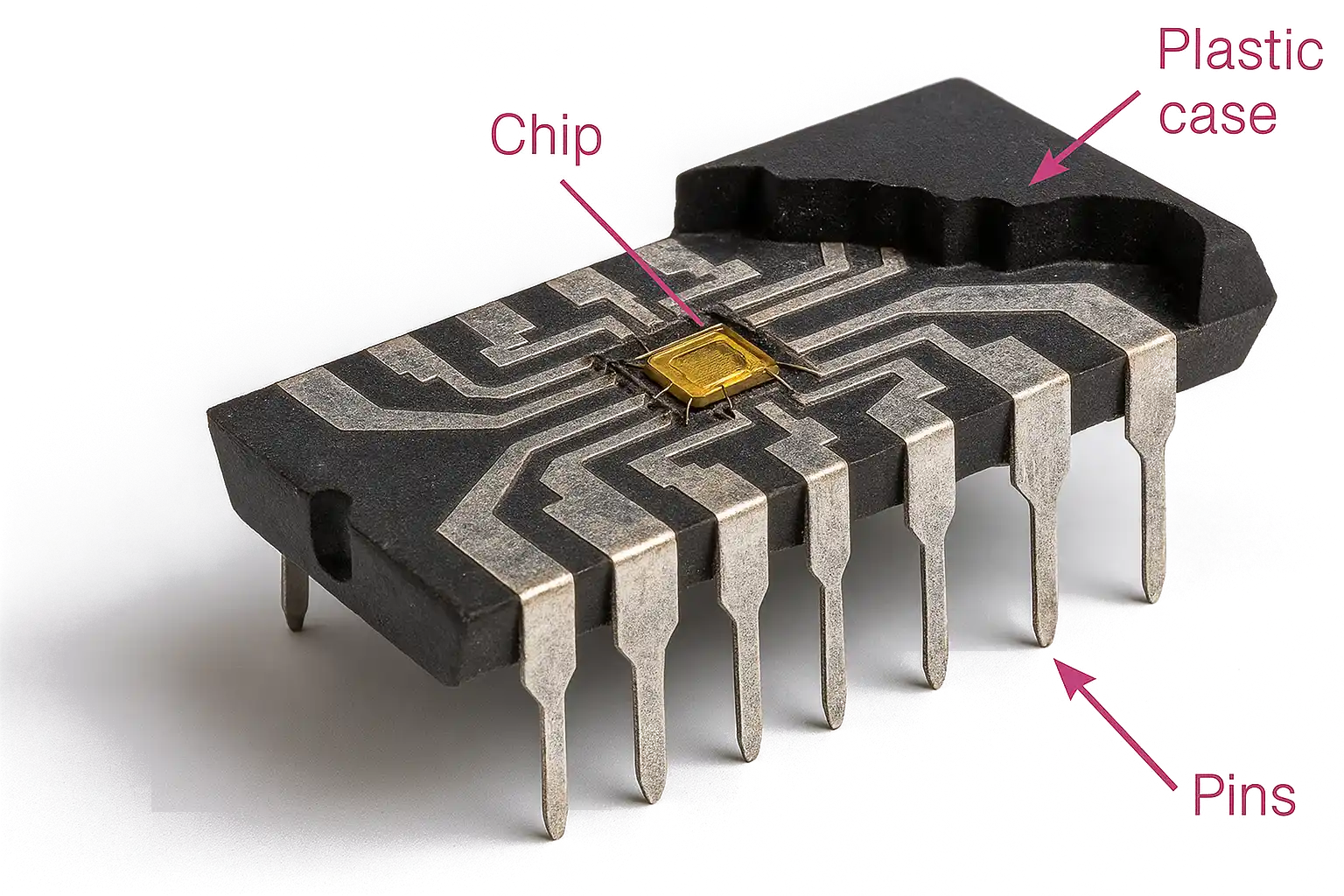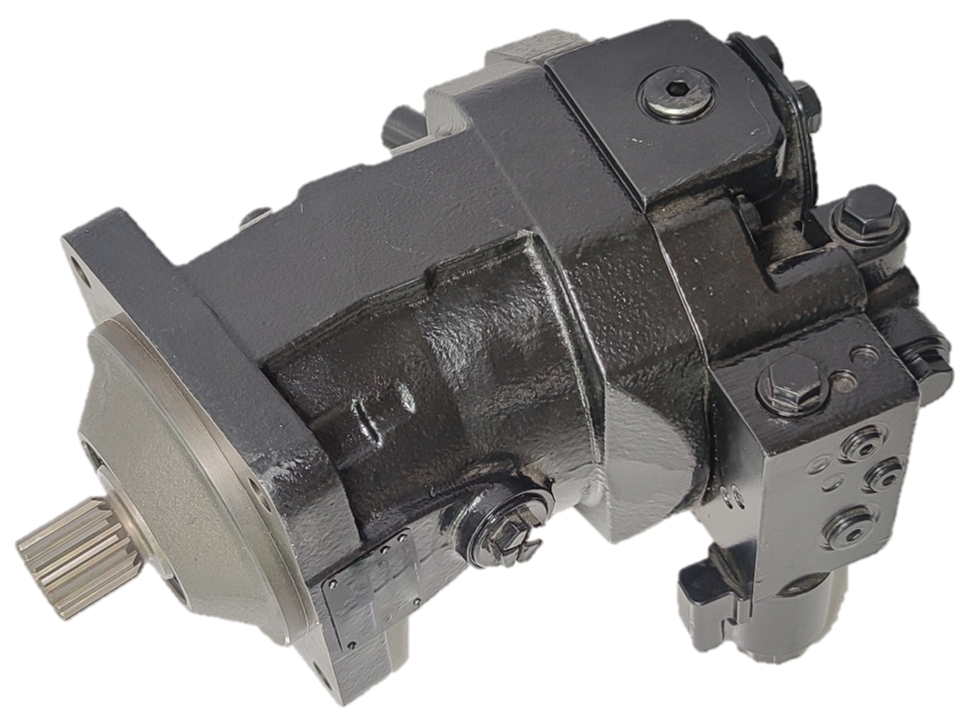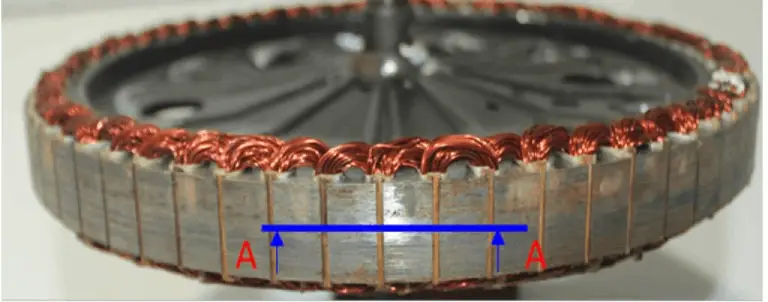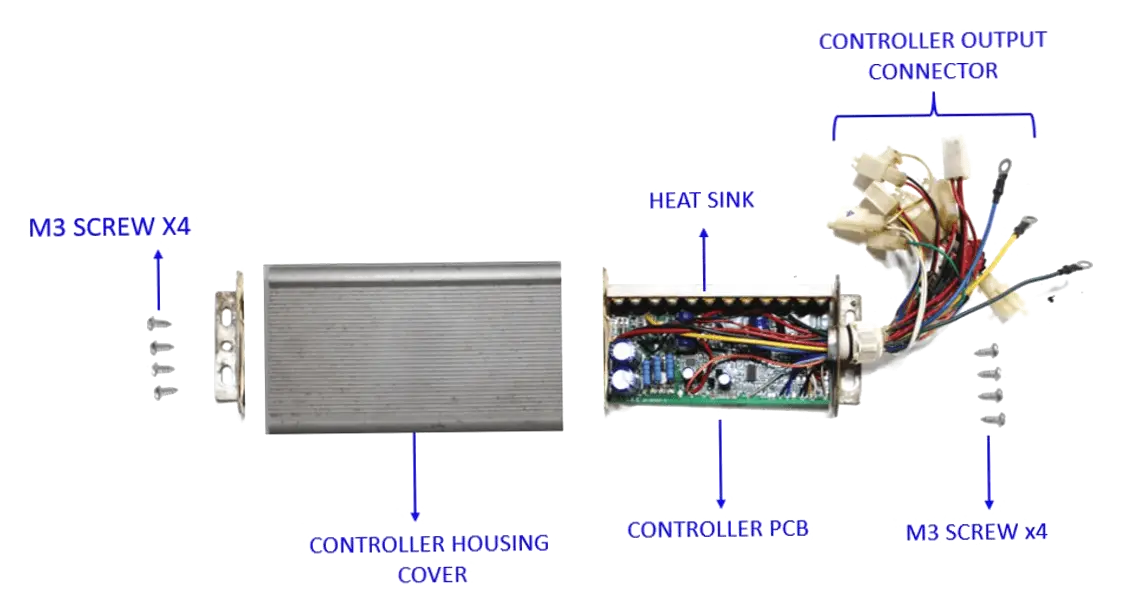Industrial Equipment Benchmarking & Cost Reduction
A teardown-led approach to find real savings
ASI Engineering executes detailed teardown and benchmarking studies for industrial and heavy machinery, comparing your product against competing solutions to understand how every design, material, and process choice affects cost. Using xcPEP, our team models each real manufacturing operation - from casting, forging, and machining to wiring, assembly, and testing - to create a precise, process-driven cost structure.
This structured approach uncovers hidden cost gaps across mechanical and electrical subsystems - showing where material utilization can be improved, process routing simplified, or over-engineered features redesigned. Every number is derived from real manufacturing logic, not estimates or multipliers, making each finding reliable and actionable.
From gear pumps, hydraulic valve blocks, and planetary drives to cooling modules, control cabinets, operator stations, and welded chassis frames, each teardown reveals how cost accumulates - and how it can be optimized without compromising safety, reliability, or compliance.
These studies help manufacturers convert teardown findings into clear cost-reduction actions - smarter design changes, more efficient fabrication methods, and negotiation-ready supplier fact packs that drive measurable savings.
Industrial Equipment
Benchmarking & Cost Reduction
Cost reduction in industrial equipment isn’t about price cuts - it’s about understanding where costs truly come from.
ASI Engineering combines teardown benchmarking, process-real should costing, and xcPEP modeling to reveal the real cost structure of heavy equipment systems.
From gear pumps and hydraulic blocks to cooling units and welded frames, each study identifies inefficiencies and compares them with proven alternatives.
The outcome: actionable, transparent insights that help engineering and sourcing teams cut waste, benchmark smarter, and negotiate confidently - without affecting quality or performance.
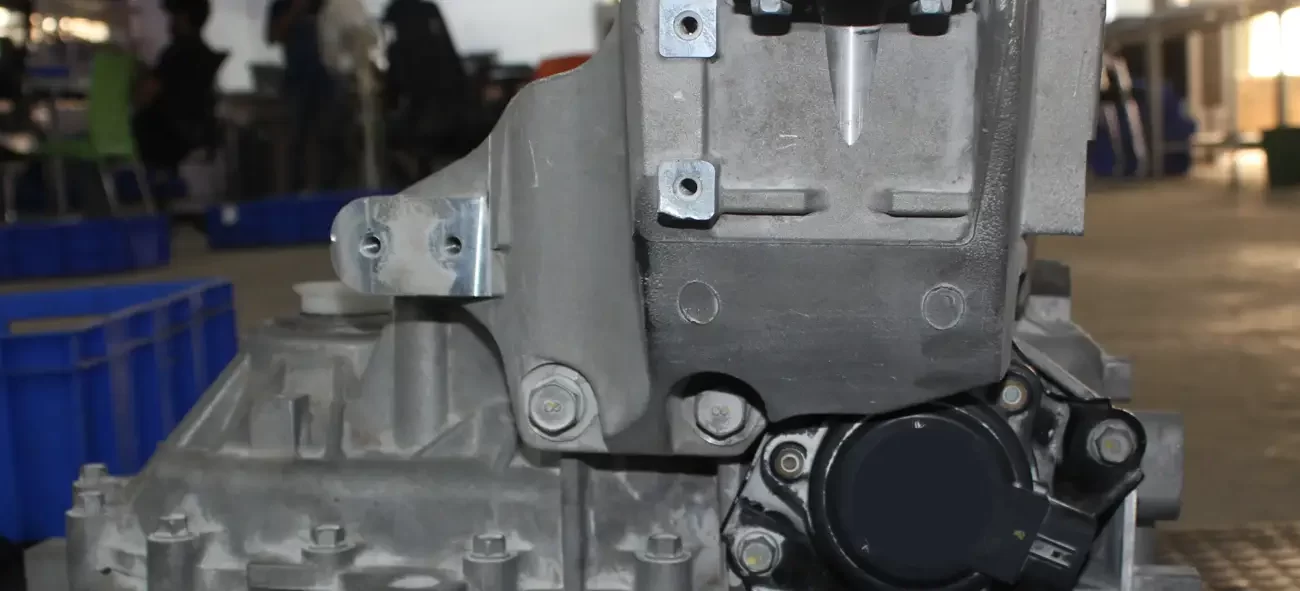
Teardown benchmarking
Of Customer's & Competitor's Product.
Should Costing
Of Customer's & Competitor's Product.
Cost Reduction Idea Generation
By analyzing cost gaps between customer's and competitor's Product.
Challanges and limitations of methods in -
Industrial Equipment Cost Reduction Studies
Cost reduction in industrial equipment isn’t as simple as comparing supplier quotes or tweaking a few line items in a spreadsheet. Each product - whether it’s a hydraulic pump, drive housing, control panel, or gearbox - is a mix of fabricated, machined, welded, and assembled parts built in low to medium volumes. No two suppliers build it exactly the same way.
Most cost-reduction methods fail because they skip this reality. They focus on part prices, not processes. They rely on global averages, catalog multipliers, or supplier data — ignoring what actually happens on the shop floor: setup times, fixture changes, batch sizes, operator skill levels, and machine utilization. Without this process-level visibility, teams only see the symptom of high cost, not the cause of it.
Industrial assemblies also include electrical and control systems, and very few costing tools can model both mechanical and electronic domains together.
This makes cost benchmarking inconsistent - one side of the product is modeled, while the other is left to assumptions.
Regional and supplier dependency make it even harder. The same casting or hydraulic block made in India, Germany, or the U.S. will have entirely different cost drivers - from labour structure and tool amortization to machine-hour rates and logistics. Traditional cost reduction tools flatten these differences into one multiplier and call it a comparison. That’s why surface-level suggestions like “change material” or “source from low-cost region” rarely hold up in production.
To find real savings, you need to understand how cost builds up across processes, plants, and suppliers - not just what the invoice says.
The more you understand how cost is built, the easier it becomes to reduce it - from the first process to the final test. Real savings come when every operation, material choice, and sourcing decision is seen for what it truly contributes to the product.
Electronics Should Costing in xcPEP
Every part is disassembled, mapped, and costed using actual process flow
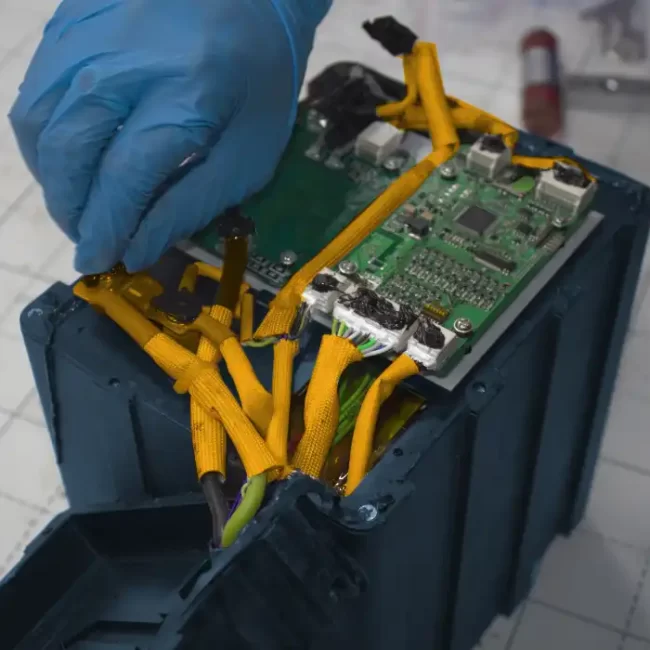
How ASI Engineering Uses
xcPEP to Drive Savings
Electronics are now a critical part of industrial equipment - from PLC control boards and motor driver circuits to power distribution modules and sensor interface PCBs. Accurately estimating their cost requires more than component prices; it demands a process-level understanding of how these assemblies are actually built.
xcPEP provides a dedicated electronics costing module designed specifically for this. It models each step of PCB manufacturing using actual SMT logic - including stencil setup, placement time, soldering, inspection, and reflow cycles. Each board is analyzed based on stack-up, pad layout, component density, and yield assumptions derived from real production conditions.
By integrating with xcPROC, xcPEP automatically applies region-specific machine-hour rates, operator wages, and material prices. This ensures every electronic assembly reflects its true manufacturing cost - not spreadsheet averages or catalog estimates.
The result is a transparent and defensible should cost for control PCBs, sensor modules, actuator drivers, and communication boards - helping engineering and sourcing teams validate supplier quotes, plan design trade-offs, and identify cost-down opportunities with confidence.
In depth costing of PCB
In depth costing of mechanical parts
Massive Library of Cost Models
ASI Engineering maintains a comprehensive library of validated cost models within xcPEP tailored specifically to consumer electronics. Teams quickly benchmark new designs or sourcing decisions against reliable models, accelerating the discovery of cost reduction ideas.
Precise Machine Database
ASI Engineering utilizes xcPEP’s integrated machine database, ensuring every costing study is based on real utilization rates and exact production data. This ensures cost reduction analyses reflect true manufacturing conditions, enabling confident negotiations with suppliers.
Scenario costing: Easily shift PCB sourcing from China to India
ASI Engineering employs xcPEP’s scenario costing functionality to instantly compare different sourcing scenarios, such as shifting PCB production from China to India. Teams can quantify the exact cost impact, enabling informed decisions to optimize sourcing strategies and reduce supply chain costs.
In depth data analysis for cost savings
ASI Engineering provides structured and detailed cost analyses through xcPEP, going beyond simple averages. Granular insights on every part and manufacturing step enable teams to proactively identify previously hidden cost reduction opportunities.
The captured data flows directly into xcPEP, where it enables side by side cost comparison between your product and competing devices. This structured input allows ASI Engineering to trace cost differences back to design, packaging, or layout choices and generate specific, actionable ideas to reduce cost while maintaining product performance.
xcPEP
xcPROC
Should Cost Models for Industrial Equipment Should Costing
Comprehensive, process-wise costing built inside xcPEP by ASI Engineering.
Industrial equipment & heavy machinery should costing begins with clean, process-wise cost models. At ASI Engineering, we build part-level models using actual manufacturing logic—routing, machine time, tool wear, and regional cost inputs. All models are created inside xcPEP, our structured should cost analysis software, and are used by OEMs and Tier-1s for design validation, supplier benchmarking, and cost reduction.
From injection moulding and stamping to machining, testing, and packaging, each process is modelled using our proven should costing methodology. This ensures consistency, traceability, and speed in every automotive should costing engagement.
Should Cost Models for Plastic Moulding

- Film Packaging
- Polyethylene (PE) Films
- Polypropylene (PP) Films
- Polyethylene Terephthalate (PET) Films
- Biaxially Oriented Polypropylene (BOPP)
- Cast Polypropylene (CPP)
- Biaxially Oriented Polyester (BOPET)
- Amorphous Polyester (APET)
Thermoforming
- Vacuum Forming
- Pressure Forming
- Drape Forming
- Twin-Sheet Forming
- Foam Moulding
- Structural Foam Moulding
- Architectural Foam Moulding
- Foam Crown Moulding
- Stucco Foam Trim
- EPS Shape Moulding
Extrusion Moulding – Plastic & Ceramic
- Direct (Forward) Extrusion
- Indirect (Reverse) Extrusion
- Hydrostatic Extrusion
- Blown Film Extrusion
- Sheet/Film Extrusion
- Tubing Extrusion
- Coextrusion
- Extrusion Coating
Plastic Rota Moulding
- Clamshell Machine
- Shuttle Machine
- Carousel Machine
Injection Moulding – Thermoplastic
- High-Pressure Injection
- Micro Injection Moulding
- Gas-Assisted Injection
- Thin-Wall Packaging Moulding
Injection Moulding – Thermoset
- Transfer Moulding
- Compression Moulding
- Reaction Injection Moulding (RIM)
- Blow Moulding
- Extrusion Blow Moulding
- Injection Stretch Blow Moulding
- Accumulator Head Blow Moulding
Should Cost Models for Rubber Moulding

- Compression Moulding – Rubber
- Hydraulic Compression Moulding
- Transfer Compression Moulding
- Preformed Rubber Blank Moulding
- Closed Mold Curing
- Rubber Sheet Moulding
- Extrusion Moulding – Rubber
- Hot Feed Extrusion
- Cold Feed Extrusion
- Microwave Curing Extrusion
- Steam Vulcanization Extrusion
- Salt Bath Curing
- Autoclave Curing
- Injection Moulding – Rubber
- Liquid Injection Moulding (LIM)
- Vacuum Injection Moulding
- Rubber Transfer Injection
- Cold Runner Injection Moulding
- Injection Moulded Seals & Gaskets
- Extrusion Moulding – Rubber & Plastic
- Dual Extrusion (Hard-Soft Combinations)
- Co-extruded Weather Seals
- TPV and EPDM Hybrid Extrusion
- Rubber-Plastic Strip Profiles
- Edge Trim Extrusion
Should Cost Models for Metal Forming

- Cold Forging
- Cold Heading
- Cold Extrusion
- Cold Impact Extrusion
- Coining
- Cold Roll Forging
Ferrous Casting – Sand Casting
- Green Sand Casting
- Resin-Bonded Sand Casting
- No-Bake Sand Casting
- Shell Moulding
- Lost-Foam Casting (Ferrous)
Hot Forging – Gear
- Upset Forging of Gear Blanks
- Cogging
- Skiving & Burnishing
- Finish Forging
Hot Forging – Crankshaft
- Preform Forging
- Rotary Forging
- Impression-Die Forging
- Finish Forging & Trimming
- Powder Metallurgy
- Cold Press & Sinter
- Hot Isostatic Pressing (HIP)
- Metal Injection Molding (MIM)
- Powder Forging
Spring – Cold Wound
- Compression Spring Coiling
- Extension Spring Coiling
- Torsion Spring Coiling
- Wire Straightening & Stress Relieving
Spring – Hot Wound
- Hot Coil Winding
- Ring Spring Forming
- Shot Peening
- Annealing
Substrate – Metallic
- Aluminum Substrate Bonding
- Copper Core Substrates
- Metal-Insulated Substrates (IMS)
- Heat-Sink Metal Cores
- Zinc Casting – HPDC
- Hot-Chamber Die Casting
- Cold-Chamber Die Casting
- Vacuum Die Casting (Zinc)
- Squeeze Casting
Zinc Casting – GDC
- Tilt-Pour Gravity Casting
- Low-Pressure GDC
- Slush Casting
- Permanent-Mould Casting
Aluminium Casting – HPDC
- Cold-Chamber HPDC
- Hot-Chamber HPDC
- Vacuum HPDC
- High-Pressure Die Casting (Al Alloys)
Aluminium Casting – GDC
- Tilt-Pour Permanent-Mould Casting
- Slush Casting
- Low-Pressure Permanent-Mould
- Semi-Solid Rheo Casting
- Brass Casting – LPDC
- Bottom-Fill LPDC
- Counter-Gravity LPDC
- Semi-Solid LPDC
- Hot-Chamber LPDC
Brass Casting – GDC
- Tilt-Pour Gravity Casting
- Permanent-Mould GDC
- Centrifugal Casting (Brass)
- Sand-Mould Gravity Casting
Hot Forging – Roll
- Cogging-Mill Roll Forging
- Controlled Rolling
- Ring Rolling
- Scale-Breaker Rolling
Hot Forging – Closed Die
- Impression-Die Forging
- Flashless Forging
- Flash-Type Forging
- Precision Forging
Should Cost Models for Metal Fabrication

- Fabrication – Sheet Metal
- Laser Cutting
- Shearing
- Press Brake Bending
- Punching & Notching
- Roll Forming
- Deburring & Finishing
Machining – Gear
- Gear Hobbing
- Gear Shaping
- Gear Grinding
- Gear Broaching
- Gear Heat Treatment
- Fabrication – Structural & Others
- Steel Beam & Plate Welding
- Pipe & Tube Spooling
- Chassis & Frame Assembly
- Sheet Lamination
Metal Hose Assembly
- Spiral‐Wound Hose
- Braid Reinforced Hose
- Corrugated Hose
- PTFE Lined Hose
- Swaging & End Fitting
Stamping – Progressive Die
- Multi-station Strip Feeding
- Cutting, Forming & Piercing
- Progressive Coil Processing
- Stamping – Transfer Die
- Individual Blank Feeding
- High-Speed Compound Operations
- Automated Part Transfer
Stamping – Compound Die
- Simultaneous Cutting & Forming
- Deep Draw & Embossing
- High-Tonnage Presses
Cutting & Ablation
- Laser Cutting
- Plasma Cutting
- Waterjet Cutting
- Oxy-Fuel Cutting
- Welding & Joining
- MIG / MAG Welding
- TIG Welding
- Spot Welding
- Friction Stir Welding
- Laser Welding
Surface & finishing
- Grinding & Polishing
- Powder Coating
- Anodizing
- Galvanizing
Should Cost Models for Electrical

- Connectors
- Wire-to-Wire Connectors
- Wire-to-Board Connectors
- Board-to-Board Connectors
- Terminal Blocks
- Automotive Sealed Connectors
Electrical Cable
- Shielded Power Cable
- Coaxial Cable
- Ribbon Cable
- High Voltage Cable
- EV Battery Cables
Cell
- Cylindrical Cell
- Prismatic Cell
- Pouch Cell
- LFP / NMC / NCA Chemistries
- Cell Terminal Configurations
Display
- LCD Panel
- LED Backlit Display
- OLED Display
- Touch Panel (Capacitive / Resistive)
- TFT Module
- PCB – Aluminium
- Single Layer Aluminium PCB
- IMS (Insulated Metal Substrate)
- High Thermal Conductivity Types
- LED Application Boards
PCB – Copper
- Heavy Copper PCB
- High Frequency PCB
- Multilayer Copper Core
- RF Power PCBs
PCB – FR4
- Standard FR4 PCB
- Multilayer FR4 PCB
- Rigid-Flex FR4
- High Tg FR4
PCB – Ceramic
- Alumina Ceramic PCB
- Aluminium Nitride PCB
- Direct Bonded Copper (DBC)
- Low-Temperature Co-fired Ceramic (LTCC)
- PCB – Flexible
- Single-Sided Flex PCB
- Double-Sided Flex PCB
- Rigid-Flex PCB
- Polyimide Substrate
Bare PCB – 1 Layer
- FR4 / CEM1
- HASL Finish
- Basic Copper Thickness
Bare PCB – 2 Layer
- FR4 / Aluminium
- Via Drilling
- ENIG / OSP Finishing
Bare PCB – 4 Layer
- Signal-Ground-Signal-Ground Stackup
- Controlled Impedance
- Via-in-pad Design
- Bare PCB – 6 Layer
- Power-Ground Separation
- High-Speed Signal Routing
- Blind & Buried Vias
Bare PCB – 8 Layer
- Advanced Multilayer Stackup
- High-Density Interconnect (HDI)
- Thermal Management Layers
Stator
- Laminated Core Stator
- Hairpin Wound Stator
- Slotted vs Slotless Stator
- Die Cast Winding
Rotor
- Squirrel Cage Rotor
- Interior Permanent Magnet (IPM)
- Surface PM Rotor
- Wound Rotor Construction
Should Cost Models for Machining

- Drilling
- Standard Twist Drilling
- Deep Hole Drilling
- Gun Drilling
- Pilot & Reaming
Tapping
- Hand Tapping
- Machine Tapping
- Blind Hole Tapping
- Thread Forming
Turning
- External Turning
- Facing on Lathe
- Grooving & Parting
- Thread Turning
Milling
- Face Milling
- Slot Milling
- Profile Milling
- End Milling
Threading
- Single-Point Thread Cutting
- Rolling Dies
- Thread Milling
- Facing
- Lathe Facing
- Plunge Facing
- Facing in Chuck Work
Broaching
- Internal Keyway Broaching
- External Surface Broaching
- Rotary Broaching
Grinding
- Surface Grinding
- Cylindrical Grinding
- Centerless Grinding
- Tool Grinding
Boring
- Line Boring
- Jig Boring
- Horizontal Boring
Notching
- Tube Notching
- Sheet Metal Corner Notching
- Angle Notching
- Laser Cutting
- Fiber Laser
- CO₂ Laser
- Pulse Laser for Microcutting
Honing
- Manual Honing
- Vertical Honing
- Plateau Honing (Automotive)
Gear Hobbing
- Spur Gear Hobbing
- Helical Gear Hobbing
- Spline Cutting via Hobbing
Gear Shaping
- Internal Gear Shaping
- External Gear Shaping
- Timing Gear Shaping
Gear Shaving
- Radial Infeed Shaving
- Diagonal Shaving
- Underpass Method
- Gear Grinding
- Profile Grinding
- Generating Grinding
- Form Grinding
Shot Blasting
- Steel Grit Blasting
- Wheel Blast Systems
- Shot Blast Cleaning
Shot Peening
- Air Blast Peening
- Gravity Peening
- Saturation Peening
Sand Blasting
- Suction Sandblasting
- Pressure Blasting
- Abrasive Media Selection
Lapping
- Flat Lapping
- Cylindrical Lapping
- Polishing and Final Finishing
Should Cost Models for Welding & Joining

- MIG / MAG Welding
- Carbon Steel MIG
- Stainless MAG
- Pulse MIG for Aluminum
TIG Welding
- Manual TIG
- Orbital TIG
- Thin Section Welding
- Spot Welding
- Projection Spot Welding
- Cross Wire Welding
- Resistance Spot Weld
Friction Stir Welding
- Aluminum Profile Joining
- Tool Steel Weld Head
- Automated Linear FSW
- Laser Welding
- Keyhole Welding
- Conduction Welding
- Fine Micro-Welds
Ultrasonic Welding
- Plastic Ultrasonic Welding
- Wire Splicing
- Battery Tab Welding
- Riveting / Clinching
- Solid Riveting
- Blind Riveting
- Mechanical Clinching
Should Cost Models for Surface Finishing

- Powder Coating
- Epoxy Powder Coat
- Polyester Powder Coat
- Hybrid Powder Finishes
Electroplating
- Nickel Electroplating
- Zinc Plating
- Chrome Plating
- Anodizing
- Type II Color Anodizing
- Type III Hard Anodizing
- Clear & Black Coatings
Galvanizing
- Hot-Dip Galvanizing
- Electrogalvanizing
- Dry Coating Post-Galv
- Passivation
- Citric Acid Passivation
- Nitric Acid Process
- Stainless Steel Surface Prep
- Deburring & Polishing
- Tumbler Finishing
- Vibratory Deburring
- Buffing & Brushing
Should Cost Models for Testing & Inspection

- Dimensional Inspection
- CMM Inspection
- Height Gauge / Vernier
- Go/No-Go Gauge
Visual Inspection
- Manual Surface Check
- Visual Defect Sorting
- Deflash / Burr Check
- X-Ray & CT
- Die-Cast Void Inspection
- Battery Cell CT Scan
- BGA Package X-Ray
- Hardness & Microstructure
- Rockwell / Vickers Testing
- Metallographic Etching
- Grain Size Analysis
- Leak & Pressure Testing
- Helium Leak Test
- Air Decay Test
- Hydrostatic Pressure Test
Should Cost Models for Packaging & Logistics
- Export Packaging
- Palletized Crates
- Heat-Treated Wood (ISPM 15)
- Heavy-Duty Shrink Wrap
Returnable Packaging
- Plastic Bin Systems
- Metal Returnable Cages
- Foldable Crates
- Thermoformed Trays
- Anti-Static Trays
- Custom Molded Cavities
- Conductive Tray Systems
- Labeling & Identification
- Barcode Printing
- Part ID & QR Labels
- Compliance Tagging (RoHS, REACH)
- Final Assembly Packing
- Subassembly Kits
- Cushioned Inserts
- Operator Instruction Leaflets
Miscellaneous Should Cost Models for Automotive
Booklet
- Saddle Stitch Binding
- Perfect Binding
- Wiro Binding
- Folded Leaflet Assembly
- UV Coating & Lamination
Composite
- Prepreg Layup
- Vacuum Bagging
- Resin Transfer Moulding (RTM)
- Autoclave Curing
- Filament Winding
- Fabric – Rexine
- Heat Embossing
- Pattern Cutting
- Stitching & Overlocking
- Surface Coating
- PVC/PU Backing Lamination
Glass Sheet Manufacturing
- Float Glass Process
- Annealing & Cutting
- Coating & Tempering
- Silk Screen Printing
- Mirror Backing Application
- Glass Moulding
- Press & Blow Moulding
- Injection Blow Moulding
- Rotary Moulding
- Hot Mould Preheating
- Annealing Tunnel Furnace
Paper Packaging
- Corrugated Box Forming
- Die Cutting & Slotting
- Folding & Gluing
- Printed Sleeve Application
- Pulp Moulded Tray
- Substrate – Ceramic
- Alumina Ceramic Substrates
- Green Tape Lamination
- Laser Scribing
- Firing & Metallization
- Direct Bonded Copper (DBC)
Wood
- Plywood Cutting
- Edge Banding
- Laminate Pressing
- Routing & CNC Machining
- Surface Polishing
Comprehensive and Detailed Data Mapping
By leveraging machine learning models built in xcPEP
ASI Engineering uses purpose-built tools developed in house to support fast and structured teardown of consumer electronics products. These systems are designed to extract part level physical and geometric data such as bounding box dimensions, projected surface area, and PCB component details without relying on manual measurement or visual approximation.
The captured data flows directly into xcPEP, where it enables side by side cost comparison between your product and competing devices. This structured input allows ASI Engineering to trace cost differences back to design, packaging, or layout choices and generate specific, actionable ideas to reduce cost while maintaining product performance.
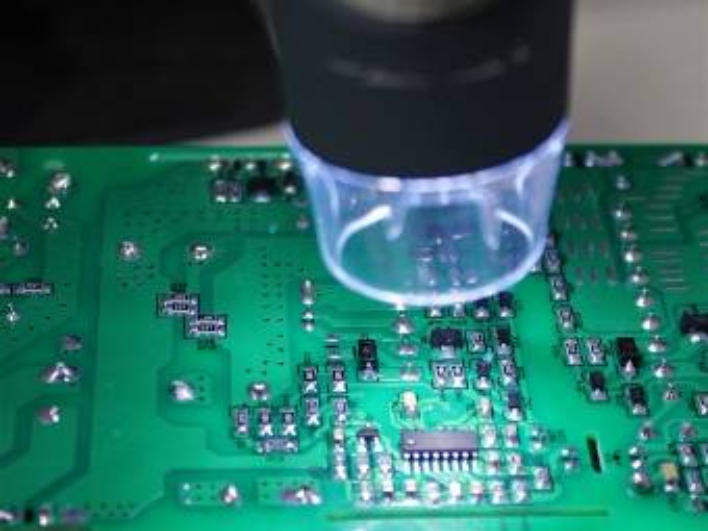
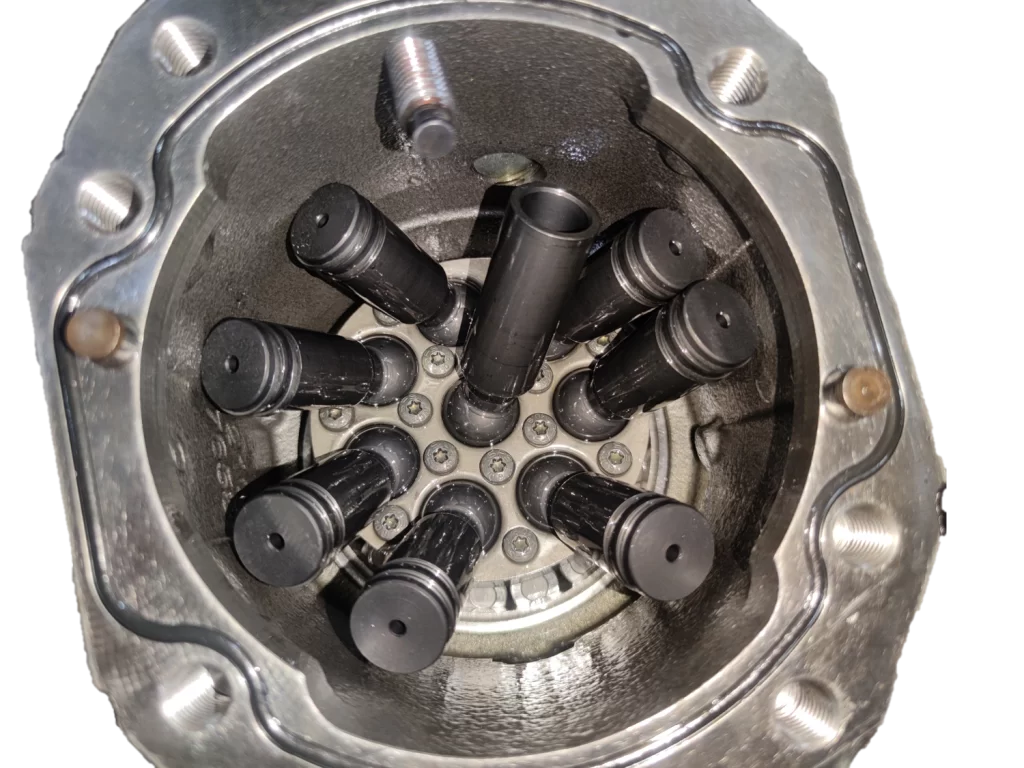
Detailed Data Mapping of -
Mechanical Components
For mechanical assemblies in industrial equipment, ASI Engineering captures detailed physical data during teardown to identify cost drivers and savings opportunities. Components such as pump housings, valve blocks, compressor shafts, and gearbox casings are analyzed to map dimensions, machining allowances, and surface finish parameters.
To speed up this process and ensure consistency, ASI uses in-house tools like the Bounding Box Dimension Capture System and the Projected Area Capture System. his data is then used inside xcPEP to simulate real manufacturing processes and validate where savings can be achieved.
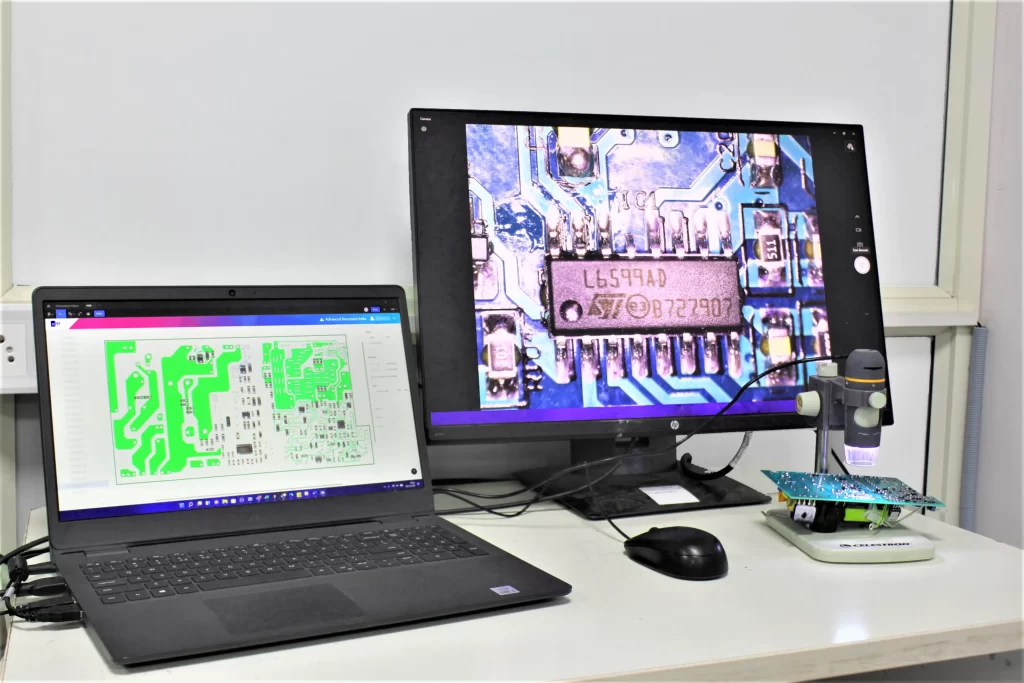
Detailed Data Mapping of -
Electrical Components
Industrial systems today integrate a wide range of electrical modules - from PLC control boards and power distribution PCBs to drive circuits and safety relays. ASI Engineering uses AI-assisted imaging tools to capture part-level data directly from these boards with precision and repeatability.
Each resistor, connector, and IC is automatically identified and classified, and the resulting data is fed into xcPEP, where it is mapped with process logic, regional rates, and sourcing parameters. This enables fast, engineering-grade costing of control electronics without relying solely on supplier data.
Whether it’s to validate a control cabinet design, optimize a sensor module, or re-engineer a motor drive assembly, this structured approach helps teams make confident, data-backed cost decisions - turning teardown insights into measurable savings.
Cost Reduction Idea Generation in xcPEP
Software & Data Driven
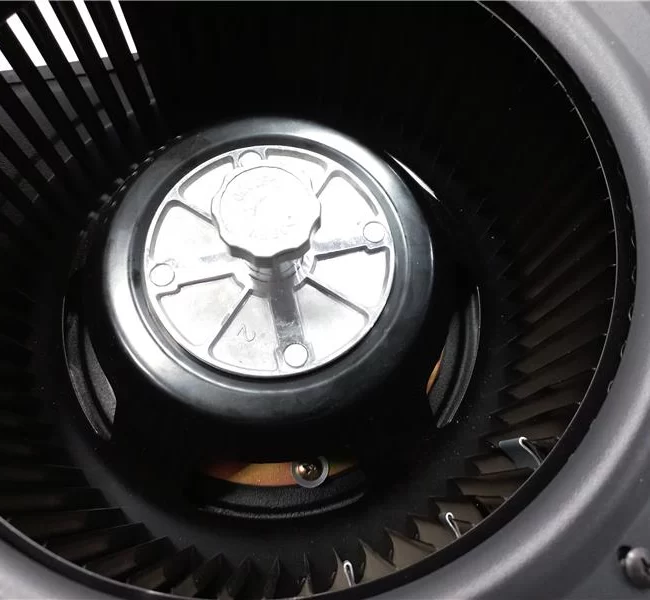
Costing of Own Product
ASI Engineering uses xcPEP to cost your own product precisely, creating a clear baseline to spot savings.
Costing of Competitor Product
ASI Engineering benchmarks competitors using xcPEP, quickly revealing areas where competitors have lower costs.
Idea Generation by Comparison
ASI Engineering uses xcPEP to compare your product with competitors and identify actionable cost savings opportunities.
Engineering channels for cost reduction ideas
using xcPEP
Decontent
Alternate Material
ASI Engineering leverages xcPEP to evaluate and quantify potential savings from using alternate materials. The platform clearly compares material costs, processing differences, and overall impact on manufacturing, providing confident justification for material changes.
Alternate Supplier
With xcPEP, ASI Engineering quickly evaluates the cost impact of changing suppliers. By directly comparing detailed production costs across different regions and suppliers, teams can clearly see cost advantages, enabling better-informed sourcing decisions.
Alternate Manufacturing
ASI Engineering leverages xcPEP to simulate alternative manufacturing methods. The platform shows exact cost impacts, enabling informed decisions to optimize production methods.
Routing & Packaging
xcPEP helps ASI Engineering identify cost savings in packaging and logistics by simulating alternate routing options. Teams gain clear insights to simplify processes and reduce overall costs.
Knowledge transfer workshop
With your engineers and managers at your premises
How are we different?
We build cost engineering technology. Our core products, xcPEP for should cost modelling and xcPROC for cost data, form a powerful ecosystem supported by engineering services that speed customer adoption. While we may resemble consulting or benchmarking firms, the similarity is only superficial; our strength lies in the technology we create.
|
ASI vs. Management Consultants vs. Benchmarking Companies
Approaches to Cost Optimization for Consumer Electronics Manufacturers
|
||
| ASI – Engineering-Led Cost Transformation | Management Consultants | Benchmarking Companies |
|---|---|---|
| Engineering-led cost transformation using xcPEP & xcPROC, tailored for Consumer Electronics makers. Focus on sustainable, structural cost reduction across full product lifecycles. | Strategy-focused consulting aimed at solving isolated problems. Engagements are billable-hour driven and often lead to recurring cost challenges. | No pre-existing Consumer Electronics database. Deliverables based on expensive, one-off teardown or reverse-engineering projects. |
| Transparent Should Costing for every part, adapted to each manufacturer’s supply base and production process. Highly detailed, data-driven simulations enabling targeted cost-reduction initiatives. | Relies on SME expertise and generic industry data. Often produces incremental changes without addressing systemic cost drivers. | Costing often based on simplistic formulae from limited teardown samples. Insights rarely capture the complexity of electronics manufacturing and electronics child part sourcing. |
Proprietary platforms:
| General financial models and operational frameworks. Lacks manufacturing-specific cost simulation capabilities. | Uses ad-hoc analysis tools for each engagement. No scalable platform for repeatable, accurate cost estimation. |
| Measurable, sustainable cost reductions with direct impact on margin and competitiveness. | Recommendations improve current state but may not deliver optimal or lasting results. | Outcomes are slow, costly, and often fail to justify the investment. |
| Rapid portfolio-wide analysis with live costing tools – weeks, not months. | Multi-month projects from start to final report. | Slow, custom project timelines with long lead times for any usable insights. |
Our Core Objective
|
Engineering Led Cost Transformation
Of Consumer Electronics Manufacturers
|
||
| Challenge | ASI Solution | Value |
|---|---|---|
Key Challenges
|
Our Framework
|
Business Impact
|
| Core Technology Platforms | ||
|
xcPROC Procurement Intelligence
|
xcPEP Costing Engine Precise Should Costing
|
xcPEP Idea Module Automated Design & Commercial Idea Generation
|
| Build - Operate - Transfer Engagement Model | ||
|
Phase 1: Build Detailed Should-Costing Foundation
|
Phase 2: Operate Idea Generation & Implementation
|
Phase 3: Transfer Cost Engineering Function Handover
|
|
|
|
| Deliverables & Outcomes | ||
Immediate
|
Medium-Term
|
Long-Term
|
Product Studies
This section features teardown-based costing projects conducted by ASI Engineering team across a range of complex industrial assemblies - including hydraulic motors, actuators, pumps, control cabinets, compressor systems, BLDC motors, and PCB control boards.
Every image, model, and cost breakdown shown here is based on ASI’s own internal work. These studies demonstrate how structured should costing can be applied to real-world parts and assemblies, using manufacturing logic, accurate process routing, and validated regional cost inputs.
From welded frames and cast housings to PCBA control modules and actuator assemblies, each study shows how detailed part-level costing helps trace true cost drivers, explain product complexity, and benchmark sourcing alternatives. All cost models are created in xcPEP, with rate data and routing configurations pulled from xcPROC, ensuring traceable and defensible cost outputs.

